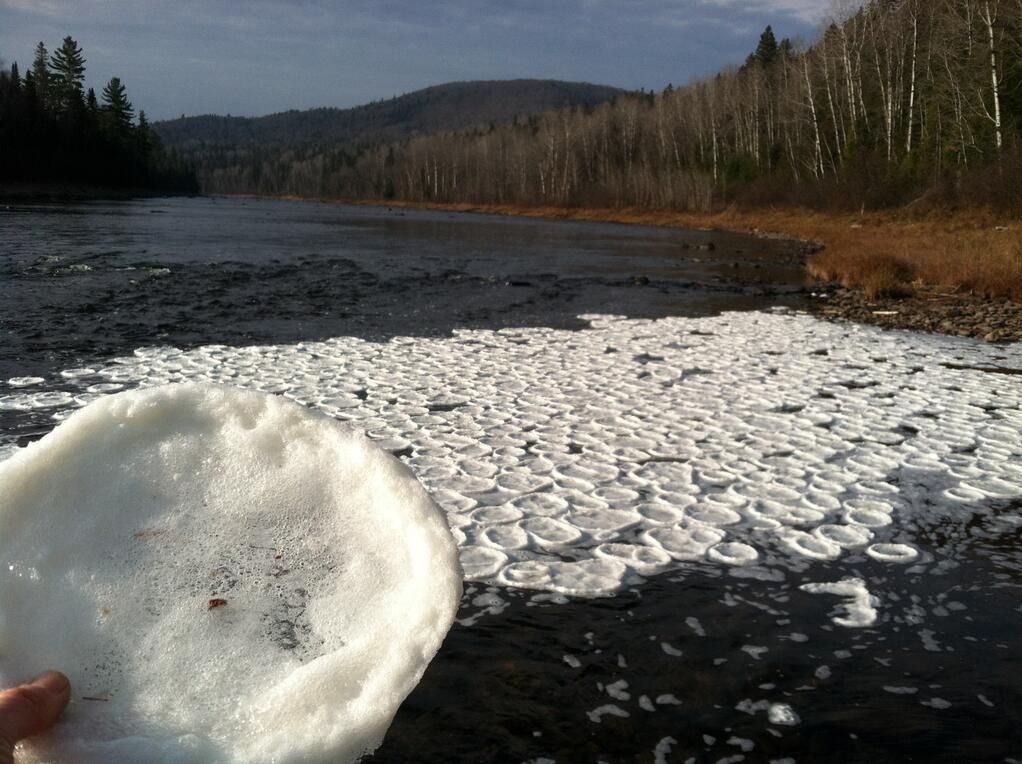
Would you like some syrup with your pancake ice? This U.S. Geological Survey image taken on the Allagash River in Maine shows "pancake ice," thin slabs that form in polar seas when slush or grease ice (a thin, slick layer of ice) accumulates into floating ice pads.
Temperatures right around 0 degrees Celsius (32 degrees Fahrenheit) with moderate wave activity are ideal for creating this phenomenon. The "pancakes" can be up to 10 feet (3 meters) across, and up to 4 inches (10 centimeters) thick but typically don't disturb navigation. The raised rims are caused sometimes by the pieces striking each other and sometimes by slush that gets splashed onto the edges and freezes to gradually form a rim. This type of ice can also form at depth and then float to the surface.
Follow OurAmazingPlanet @OAPlanet, Facebook and Google+.
Sign up for the Live Science daily newsletter now
Get the world’s most fascinating discoveries delivered straight to your inbox.













